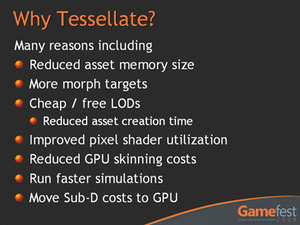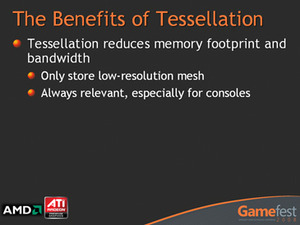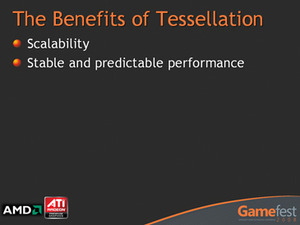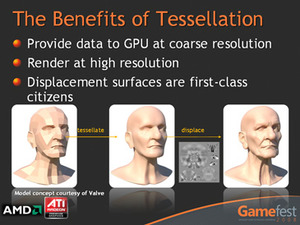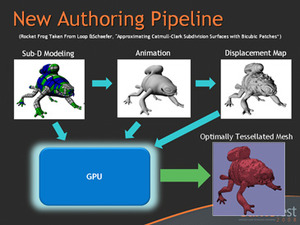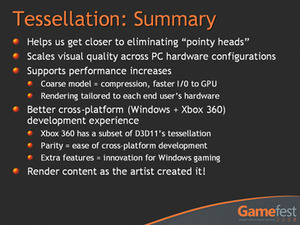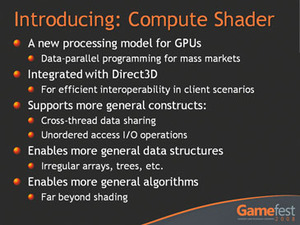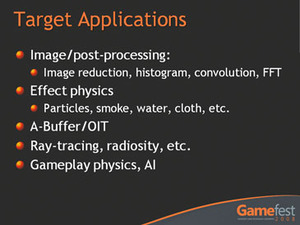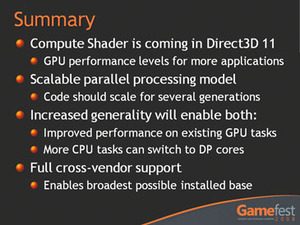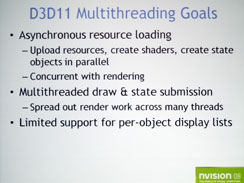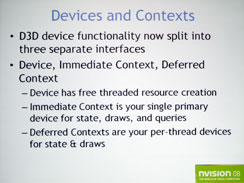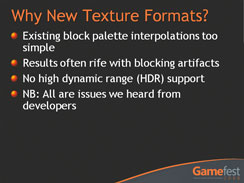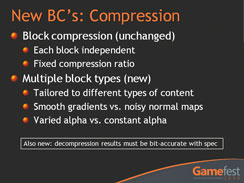MyDaRkSIDe
Power Member
Olas a todos!  Provavelmente niguem aqui me conhece mas vou dar aminha opiniao sobre o assunto. Tal como qualquer mercado o objectivo é melhorar e surpreender os consumidores com uma tecnologia melhor e mais avançada. Nos ultimos 2 anos temonos deparado com uma enorme evolução na tecnologia no mundo da informática. Como a tecnologia evolui são feitas entao novas placas preparadas para essa tenologia. Voces nao podem dizer que as maquinas mal correm Dx10 que é mentira, existe agora é uma variedade muito menor de placas Boas para correr DX10, enquanto que no nosso passado tinhamos uma Voodoo , ou Matrox, ou Nvidia, ou ATI, ou uma outra qq , que corria os jogos sem qualquer problema, porque a exigencia grafica era muito menor que a de hoje. Agora estamos num mercado em que é extremamente exigente os graficos, se forem a ver é o que dão mais importancia nos jogos. O facto de um jogo não correr a 100 % nao é por causa da microsoft, mas sim nós que nao temos uma máquina preparada para tal, pois é caro e custa dinheiro, ainda por cima so há agora 2 concorrentes em placas graficas decentes ATI e Nvidia. E nao só , os jogos têm a exigencia que têm porque as empresas de jogos fazem os jogos assim.
Provavelmente niguem aqui me conhece mas vou dar aminha opiniao sobre o assunto. Tal como qualquer mercado o objectivo é melhorar e surpreender os consumidores com uma tecnologia melhor e mais avançada. Nos ultimos 2 anos temonos deparado com uma enorme evolução na tecnologia no mundo da informática. Como a tecnologia evolui são feitas entao novas placas preparadas para essa tenologia. Voces nao podem dizer que as maquinas mal correm Dx10 que é mentira, existe agora é uma variedade muito menor de placas Boas para correr DX10, enquanto que no nosso passado tinhamos uma Voodoo , ou Matrox, ou Nvidia, ou ATI, ou uma outra qq , que corria os jogos sem qualquer problema, porque a exigencia grafica era muito menor que a de hoje. Agora estamos num mercado em que é extremamente exigente os graficos, se forem a ver é o que dão mais importancia nos jogos. O facto de um jogo não correr a 100 % nao é por causa da microsoft, mas sim nós que nao temos uma máquina preparada para tal, pois é caro e custa dinheiro, ainda por cima so há agora 2 concorrentes em placas graficas decentes ATI e Nvidia. E nao só , os jogos têm a exigencia que têm porque as empresas de jogos fazem os jogos assim.
O Mercado mudou, a tecnologia tem dado o seu grande salto. Estamos para aqui a criticar a microsoft como se eles tivessem culpa , tipo... a microsoft vai ter de parar a sua grande empresa e a evolucao informatica la porque nao ha jogos suficientes para dx10 ou nao existem placas que corram bem os jogos? Eles nao têm culpa.. Se querem culpar alguem, culpem antes as empresas que ficaram para tras nas placas graficas, e tambem as empresas de jogos que sao eles que fazem com que os jogos fiquem pesados =P
Na minha opiniao acho que tamos a um excelente passo, e ainda bem que anda assim a esta velocidade. Pois se andar como a tecnologia dos telemoveis, em que encontra-se a um passo muito mais lento e é mais um jogo comercial que esta a ser bem aproveitado. Ou até as consolas que foi uma desilusao para alguns , pois nao sei se se lembram houve uma grande critica na PS3 que saiu o qual dizem que o processador é demais para a máquina em si por exemplo..
O que eu quero dizer com isto é que o nosso mundo da informática está a um passo bom. Podia estar a evoluir mais depressa, mas tá a um passo já excelente, e ainda bem que está assim! Posso não ter um PC bomba, mas isso não é o que importa, sim a evolução da tecnologia pois as coisas vão se tornar mais interessantes com o tempo
Não acham?
 Provavelmente niguem aqui me conhece mas vou dar aminha opiniao sobre o assunto. Tal como qualquer mercado o objectivo é melhorar e surpreender os consumidores com uma tecnologia melhor e mais avançada. Nos ultimos 2 anos temonos deparado com uma enorme evolução na tecnologia no mundo da informática. Como a tecnologia evolui são feitas entao novas placas preparadas para essa tenologia. Voces nao podem dizer que as maquinas mal correm Dx10 que é mentira, existe agora é uma variedade muito menor de placas Boas para correr DX10, enquanto que no nosso passado tinhamos uma Voodoo , ou Matrox, ou Nvidia, ou ATI, ou uma outra qq , que corria os jogos sem qualquer problema, porque a exigencia grafica era muito menor que a de hoje. Agora estamos num mercado em que é extremamente exigente os graficos, se forem a ver é o que dão mais importancia nos jogos. O facto de um jogo não correr a 100 % nao é por causa da microsoft, mas sim nós que nao temos uma máquina preparada para tal, pois é caro e custa dinheiro, ainda por cima so há agora 2 concorrentes em placas graficas decentes ATI e Nvidia. E nao só , os jogos têm a exigencia que têm porque as empresas de jogos fazem os jogos assim.
Provavelmente niguem aqui me conhece mas vou dar aminha opiniao sobre o assunto. Tal como qualquer mercado o objectivo é melhorar e surpreender os consumidores com uma tecnologia melhor e mais avançada. Nos ultimos 2 anos temonos deparado com uma enorme evolução na tecnologia no mundo da informática. Como a tecnologia evolui são feitas entao novas placas preparadas para essa tenologia. Voces nao podem dizer que as maquinas mal correm Dx10 que é mentira, existe agora é uma variedade muito menor de placas Boas para correr DX10, enquanto que no nosso passado tinhamos uma Voodoo , ou Matrox, ou Nvidia, ou ATI, ou uma outra qq , que corria os jogos sem qualquer problema, porque a exigencia grafica era muito menor que a de hoje. Agora estamos num mercado em que é extremamente exigente os graficos, se forem a ver é o que dão mais importancia nos jogos. O facto de um jogo não correr a 100 % nao é por causa da microsoft, mas sim nós que nao temos uma máquina preparada para tal, pois é caro e custa dinheiro, ainda por cima so há agora 2 concorrentes em placas graficas decentes ATI e Nvidia. E nao só , os jogos têm a exigencia que têm porque as empresas de jogos fazem os jogos assim.O Mercado mudou, a tecnologia tem dado o seu grande salto. Estamos para aqui a criticar a microsoft como se eles tivessem culpa , tipo... a microsoft vai ter de parar a sua grande empresa e a evolucao informatica la porque nao ha jogos suficientes para dx10 ou nao existem placas que corram bem os jogos? Eles nao têm culpa.. Se querem culpar alguem, culpem antes as empresas que ficaram para tras nas placas graficas, e tambem as empresas de jogos que sao eles que fazem com que os jogos fiquem pesados =P
Na minha opiniao acho que tamos a um excelente passo, e ainda bem que anda assim a esta velocidade. Pois se andar como a tecnologia dos telemoveis, em que encontra-se a um passo muito mais lento e é mais um jogo comercial que esta a ser bem aproveitado. Ou até as consolas que foi uma desilusao para alguns , pois nao sei se se lembram houve uma grande critica na PS3 que saiu o qual dizem que o processador é demais para a máquina em si por exemplo..
O que eu quero dizer com isto é que o nosso mundo da informática está a um passo bom. Podia estar a evoluir mais depressa, mas tá a um passo já excelente, e ainda bem que está assim! Posso não ter um PC bomba, mas isso não é o que importa, sim a evolução da tecnologia pois as coisas vão se tornar mais interessantes com o tempo

Não acham?





